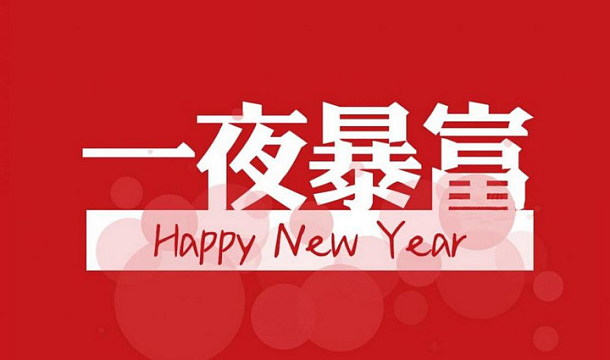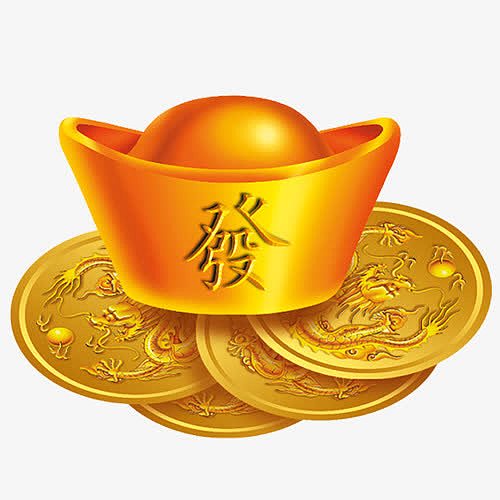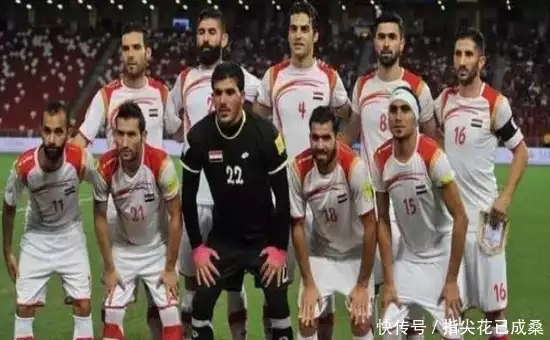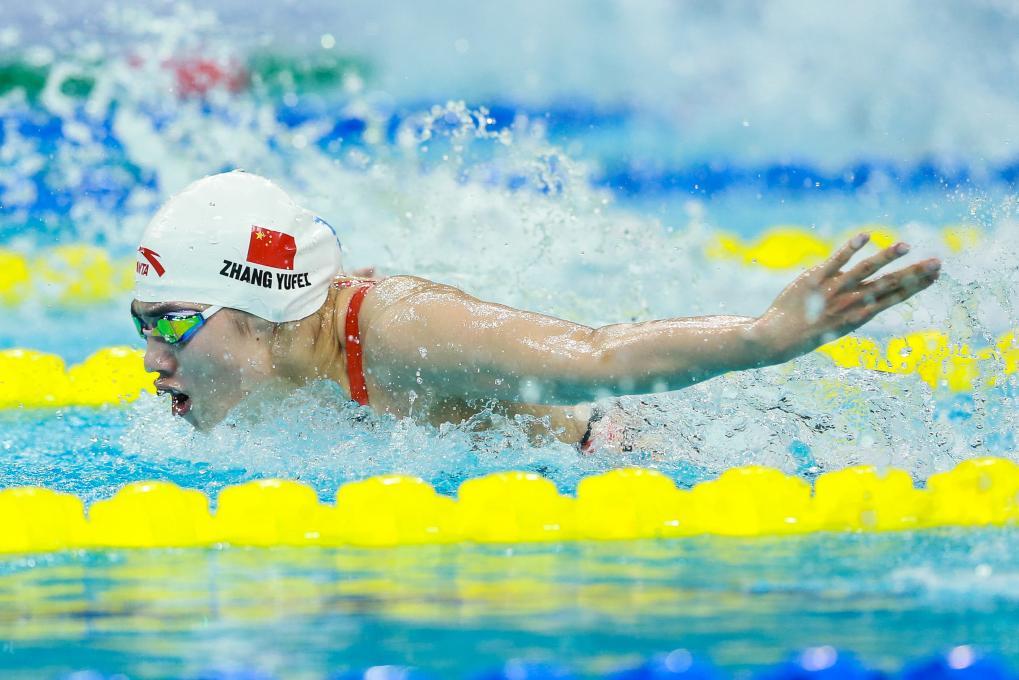
15个足球裁判的手势和位置
哨子在比赛中一定会吹来
根据游戏的需求,请尝试最大程度地减少不必要的哨声。目前,在国内比赛中,吹口哨的几种情况,对哨声的要求统一如下:
1。游戏开始:哨子,哨声稍长且响亮。
2。比赛时间结束了(包括上半场或整个比赛时间结束):一到两个短暂的哨声,然后是长时间的哨声。
3。一支球队被认为是赢得进球:长时间的哨声很大,声音拖延。
4。执行点球。哨子吹口哨,哨子稍长。
5。一般进攻:简短而有力。
6。严重的犯规:强大而响亮,声音爆炸性。
7.可能导致争议的停止行为:连续短声。
在上述情况下,如果球从场边踢出,或者球门线变成死球,以及丢球,任意球,射门球,角球,拐角踢,裁判员摔倒球等,当比赛恢复时,您就无法吹口哨。如果发生特殊情况,您可以自行决定吹口哨:
(1)球已经越过了边线或球门线,球员还没有停止比赛。裁判应该吹口哨,以表明踢球已经超出了界限。
(2)执行设定式恢复时,会有一种不符合规则的现象。当裁判纠正它时,他可以说出简短的哨声。
(3)当进攻方将任意球踢到附近或处罚区域时,裁判应在纠正卫冕党的球员撤退至距球9.15米的情况下向双方清楚解释,然后在更正后用信号恢复比赛。该信号可以用哨子或清晰的手势标记。
裁判的手势
FIFA批准的裁判的统一手势如下:
(1)直接任意球:抬起一侧或前侧,指向罚球的方向。
(2)间接任意球:举起一只手臂,用棕榈向前移动。这种手势应该持续下去,直到球被踢出并被球场上的其他球员感动或变成死球。
(iii)球门球:向前抬起一只手臂,指向执行进球球的进球区域。
(iv)拐角踢:将一只手臂对角线向上抬起,并指向拐角踢的角球区域。
(5)罚球罚款:用一只手臂向下抬起,并明确指向罚球点的罚球点。
(vi)继续比赛的计划:在球员犯规之后,裁判使用了有利的条款,不给予罚款,并且手势继续比赛:对角线伸出手臂,手掌向前,并稍微向前挥舞手臂。
(7)命令玩家出现并警告:当玩家出现或警告时,他们将分别显示红牌和黄牌。当使用红牌和黄牌时,您应该一只手握住卡,向上举起手臂,面对受惩罚的团队成员短时间,以便在场内和外部都可以看到哪个团队成员受到惩罚。
助理裁判的旗帜标志
根据规则,助理裁判无权直接下令终止比赛,也没有判决运动员的权利。他的旗帜标志仅根据规定的信号为裁判提供局势。至于是否判刑,应该由裁判决定。因此,即使助理裁判提高了旗帜以向裁判指示,也不意味着比赛将不可避免地停止。如果裁判未能回应助理裁判的旗帜标志,助理裁判应及时撤回旗帜标志。
助理裁判的旗帜指示应该方便裁判观察。因此,当助理裁判沿边线来回奔跑时,他应该习惯于灵活地握手并握住旗帜,以便一只握住旗帜的手臂朝向野外。当没有旗帜时,旗帜应该自然悬挂。跑步时,握着国旗的手臂不应大大摆动,以避免引起裁判的幻觉。
FIFA批准的统一标志如下:
(一个)越位
如果助理裁判发现球员越位并且已经构成了罚款条件,他应该站在与越位球员平行的边线之外,及时抬起旗帜,并向裁判发出信号。当裁判看到旗帜吹口哨并下令暂停比赛时:
如果助理裁判越位,助理裁判应面对田野,向前抬起旗帜并向上倾斜。如果中间球员越位,助理裁判应面对场地并在国旗前举起旗帜。如果助理裁判处于最接近的一端球员,则助理裁判应面对场地,向前和向下举起旗帜。
(ii)出口球
Assistant裁判应对角线向上抬起旗帜侧,并指示投掷球的方向。
(iii)球门球
Assistant裁判应面对赛场,将旗帜抬在球前,并指向执行进球球的进球区。
(四)角球
Assistant裁判应将旗帜向下抬到最近端的角球区域。
(5)取代团队成员
Assistant裁判发现一个团队要求指示取代球员。比赛死了后,他应该用双手抬起头顶旗帜,并提醒裁判,一支球队要求指示取代球员。
足球裁判法
1。裁判系统
裁判系统有两种类型:一个是边线裁判系统,另一个是对角线(斜线)裁判系统。苏联向副裁判制度介绍了我的国家。在解放的早期,我的国家主要采用了场外裁判制度。直到1956年国家橄榄球联盟,对角线的再审系统才被广泛采用。
(1)边线裁判系统
边线裁判系统是裁判沿边线运行的时候,而助理裁判则站在裁判对面的边线外面。每个人都负责他们在一半的裁判系统中。在当前的国际比赛中,这种裁判制度不再采用。
(2)对角线裁判系统
目前,国际和国内足球比赛采用对角线裁判制度,裁判员沿着AB对角线移动,助理裁判员移动在侧面的侧面。如果裁判接近A,则助理裁判L2应在MK之间移动。当裁判处于B的位置时,助理裁判L1应在EF之间活跃。只有当裁判与两个助理裁判紧密合作时,裁判才能更全面地观察并掌握球员的活动。
助理裁判LL检查红色队,助理裁判L2检查蓝队。当红队进入蓝色区域时,L1限制了沿边线蓝色团队的倒数第二场防守球员活动。因此,L1几乎一直都在蓝色区域一直活跃,而L2也与丁值龙队的第二名后卫一起在场外活动,而L2几乎没有进入蓝色团队。助理裁判有助于裁判注意越位,在球场上的界限和替代方案,有时有助于提供一些犯规情况。
在大多数情况下,裁判的一系列活动是将球以球作为中锋在球场中间。因此,他应该选择正确的位置,而不是阻碍或影响游戏。同时,请尝试避免裁判裁判活动,否则很容易错过边境巡逻队标志。
助理裁判应以人为以人为本的半场活动,除非进攻球员将球越过倒数第二名的防守球员,否则倒数第二名的防守球员要移动。在这种情况下,应将球居中,用球移动,并将其与球平行。
对角线裁判系统通常使用AB对角线。但是,某些国家 /地区的一些裁判也可以根据自己的习俗选择FM对角线(例如英国),并考虑阳光,气候和场地条件。在这种情况下,助理裁判也相应地调整了他的位置,他的一系列活动在进攻球队前场的左侧边线之外发生了变化。
对角线裁判系统的特征:
2。在比赛中,裁判不仅应该尽可能接近球,而且不仅应阻碍球和球员的活动。这要求裁判具有高度的预测能力,并在现场迅速,灵活,果断和及时移动。
3。有时会受到阳光和风向的影响。
2。裁判与助理裁判之间的劳动和职位
裁判工作是竞争工作的生命线。裁判和助理裁判是实施规则并领导竞争的主要成员。裁判的工作水平是确保竞争平稳进步的重要因素。因此,我们必须非常重视并提高该领域的工作质量
(i)裁判和助理裁判之间的劳动分工
1。裁判
(1)裁判的责任是实施游戏规则,解决由现场引起的各种争议,并判断各种犯规。游戏中的所有罚款均应根据裁判的判断而成为最终的罚款。当裁判认为有必要时,他或她还可以向助理裁判的意见咨询。
(2)裁判和助理裁判的衣服和设备应保持一致,并与比赛中两党的衣服有明显的不同。同时,他还应该携带两个哨子(最好是一个高低的口哨声,其中一个是备用哨声),观看或秒表,笔和记录卡,边缘拾取器,红牌和黄牌以及其他必要用品。
(3)记录游戏结果以及被红牌和黄牌惩罚的玩家的数量,并掌握游戏时间。该权利不得移交给助理裁判或其他相关人员。如有必要,助理裁判可以帮助和掌握比赛时间。例如,在比赛结束前几分钟提醒裁判先前商定的代码。但是,游戏结束的宣布是基于裁判的时间。
(4)裁判应在比赛前对各个方面进行仔细的准备,其中包括:审查和理解各种规则的精神,坚持训练并保持足够的身体健康;结合工作和休息,适应其最佳竞争状态,充满强烈的渴望和对战斗的信心;修改它们的外观;比赛前半小时,请仔细检查场地设备和设备。此外,在比赛之前举行了裁判团队准备会议,以清楚而精心地分配工作并合作。准备会议的一般内容是:
①分析了游戏情况和游戏团队的细节。
②向助理裁判和裁判裁判解释该游戏的职责和要求的范围。
③在某些特定情况下,将合作方法和信号彼此之间。
(5)比赛结束后,召集了裁判团队,仔细,全面地总结了比赛的裁判工作。通常包括以下方面:
①使用实施规则的原则和灵活性。
②现场罚款量表。
③裁判控制比赛的能力。
④钥匙球是否有重大错误。例如进球,罚球,红牌和黄牌以及越位罚款等。
⑤裁判与助理裁判之间的合作。
裁判在比赛中的跑步位置和选择。
此外,裁判还应及时检查“足球比赛记录表”,并仔细填写裁判的工作报告表。如果游戏中有警告,订单或其他事故,则必须及时填写“裁判报告”。
2。助理裁判
(1)助理裁判是裁判的助手,应该在比赛中充分协助裁判。它的主要职责是指示球从界限,拐角踢,进球,替换,并专注于协助裁判观察越位。应裁判的要求,有时会协助他附近犯规,以及裁判背后的一些犯规行动。在协助裁判执行裁判的裁判工作时,边境巡逻队应根据竞争的事实和规则原则来使用旗帜迹象向裁判提供信号,但最终判决仍然取决于裁判。
(2)助理裁判还应在比赛前进行仔细的准备,其中包括:审查和理解各种规则的精神,尤其是其责任的内容以及裁判分配的工作和权力;坚持锻炼并保持全部体力;将工作和休息的结合调整为良好的竞争状态;修改仪器和外观:仔细协助裁判在比赛前检查场地设备。同时,在运动员到达之前,请检查符合规则的球员和设备的数量。
(3)如果裁判受伤并且无法继续工作,第一任助理裁判将接管他的工作。因此,第一助理裁判必须带来与裁判相同的比赛用品。在正常情况下,第一助理裁判还应协助裁判记录进球,警告并命令出现的球员的球员人数。
3。第四任官员
尽管第四任官员(在我国被称为初步裁判或记录员)并未直接参加现场裁判工作,但他是裁判团队的重要成员之一。他坐在中心线交界处的录音台上,并在边缘线的交界处进行工作。他的职责如下:
(1)在比赛前,他负责提醒裁判和助理裁判检查他的设备和用品,以及携带游戏球,人行道标志和记录表格。
(2)参加赛前准备会议,并佩戴裁判配备的所有设备。当下雨或气候很冷时,您可以了解有关裁判服务器以外的准备会议的所有信息。喜欢添加运动服。当第一名巡边员担任场上的裁判时,第二次助理裁判是第一任助理裁判,替补助理裁判员来了,以取代第二助理裁判。
(3)双方玩家的注册表格将在游戏前半小时进行审查,并填写游戏得分记录表格。进入场地之前,请检查场上的球员数量。比赛开始后,请协助裁判填写比赛记录,构成进球的时间以及球员的替代品,警告和命令的数量。
(4)在现场管理方面做得很好,包括以下方面:
①比赛两边的板凳上的人数应遵守规定,应防止替补席上的任何人员离开板凳,大声喊叫,或者向侧面或终点线指挥。
②未经裁判许可,没有人可以进入比赛场地。如果您需要照顾伤害,则只允许两名相关人员进入场地,但是裁判的同意必须提前获得。
③停止准备在边线附近准备参加准备活动的替代品。
posep的记者超越了摄影师的极限线并使用闪光灯。
⑤严格执行替代程序,并认真地执行替代程序。
⑥保持游戏备份球很好。
(ii)裁判的跑步位置和助理裁判
一名裁判和两名助理裁判共同承担了足球比赛的裁判。根据统计数据,在一场均匀匹配和强度的高级比赛中,裁判通常的距离超过5公里,而助理裁判的活动距离约为2公里。这表明足球裁判的体力要求很高。足球比赛的场地很大,长时间,数量大和快速变化。为了适应游戏的需求,裁判不仅必须能够运行,还必须知道如何运行。
1。裁判的一般跑步路线和范围
一般而言,裁判的跑步路线是沿着AB体育场对角线奔跑,这不仅可以尽可能接近球,而且可以帮助准确地观察情况,而且随时看到侧面标志,这很方便与Sideline Patrolmen的接触和合作。但是,裁判不应受AB对角线的约束。他应该在球的前提下积极奔跑,在中锋的前提下,沿着AB对角线的方向扩大了他的动作范围,努力靠近球和比赛现场。全面,准确地观察竞争状况,并尽可能适当地选择观察位置和视野。
正确的位置选择应该是:靠近球,而不会阻碍或干扰游戏;
向上撤退;您可以清楚地看到进攻和防守球队的情况,您也可以随时了解
请参阅助理裁判的活动。因此,裁判在球的左侧积极争取射程
活动以保持自己和边线代理之间的球。即使有时裁判的位置
将其放在球的右侧,请记住不要在球和助理裁判之间奔跑
直接向上避免面对边境巡逻员的情况,但应该从前后退出
距离最小
这将使球和边线官员始终处于自己的视力领域。
2。助理裁判的一般位置和活动路线
边防部队应在半场区域的场边移动。通常,人们应该以中心为中心,并跟随后卫的第二局防守球员移动,因为这是确定进攻球员是否处于越位的标志线。除非球超过了倒数第二名的防守球员,否则助理裁判不应再盯着那个人,而是用球移动,将球保持在与球的平行线上,因为此时,判断进攻球员是否不再由人类标记,而是球。当球向对手的一半发育到中央线上的所有防守者时,助理裁判通常站在中心线和侧线的交叉口之外,因为此时判断越位的标准是由中心线标记的。
3。裁判和助理裁判的具体合作方法
(i)当球死亡时的合作方法
1。在中圈开始球
裁判站在中心线和中心圈的交汇处,面对进攻,这不仅促进了与助理裁判的适当视角,而且还促进了观察到中心圈子开球之间是否存在违规的观察。它也有利于及时跑步和选择位置。助理裁判L1和L2分别跟随两支球队的倒数第二名球员,并保持平行线。开球后,裁判根据比赛的发展移动并及时运行。
2。角球
在服用角球时,裁判应在罚球区选择一个有利的观察位置,但请注意不要影响或干扰进攻和国防球员的活动。因为在这个时候,在罚球区,尤其是目标区域。进攻和防守的球员数量都是密集的。通常,当裁判在侧面有一个角球时,应在目标区域线和同一侧的端线之间的相交点之外选择观察位置。这使得很容易观察到球门在进球前的激烈竞争中是否超出界限和犯规,尤其是判断球是否进入进球。当在助理裁判方面踢球时,由于双方的大多数运动员都远离裁判,而且有很多人重叠,因此裁判员应该选择适当的职位来观察对面罚球区拐角处的助理裁判。无论拐角踢是从哪一侧发送的,助理裁判都应该站在角球踢区域后面的端线延伸线上。一方面,观察球是否放在角球踢区域,另一方面,请观察到发出后的角踢是从末端发送的,并特别注意目标情况。如果对手的球员在拐角踢中接近9.15米,那么助理裁判也可以站在距角踢区9.15米的末端。送球后,您应该迅速返回边线以外的位置。
3。射门
裁判应选择中央圈子附近的位置,以观察在场上进攻和防守的发展。助理裁判L1应站在罚球区线的边线外面,以检查球门球是否直接发送罚球区。比赛恢复后,他应该立即跟随二次卫星后卫。助理裁判L2还需要跟上这半局的二次防守球员,并准备随时观察进攻球队的状况。
4。任意球
①通常在后场任意球有两种情况:一个是向后守门员;另一个是在后场与短传合作。裁判目前应在中场附近撤退,以观察进攻的发展。两名助理裁判应在各自的一半中使用二阵防守队员。如果任意球回到了守门员,则一半的助理裁判应站在罚球线的场边,然后守门员将球派出并观察守门员是否将球送出自由投掷区域。一旦派出球,助理裁判应迅速奔跑,以跟上二次到次的后卫。
②通常在中场任意球两种情况:一个是合作并通过中场。另一个是将球直接从中场传递到罚球区的最近。因此,裁判应提前移动,以选择可能到达球的着陆点附近的观察位置。助理裁判L2应密切关注防守球队的二阵球员,边境后卫L1仍应站在他的位置,并为进攻和防守conversion依做好准备。 ,,,,
③罚球区附近的任意球主要是通过传球或直接射击来制作。如果裁判选择观察越位位置,则助理裁判L2应该降到终点,以主要观察目标。如果裁判员在终点线附近选择一个位置,则边境警卫L2应该专注于观察越位。目前,助理裁判L1仍应处于正常位置。
5。罚球罚款
当罚球踢时,裁判应站在罚球点的左侧,靠近球门区域线的延伸线,观察球是否放在罚球点,罚球球员的罚球运动,以及其他球员(包括守门员)是否违反规则和进球情况。助理裁判L2应站在右侧罚球区和终点线的交汇处,主要协助裁判观察球是否进入进球。助理裁判L1遵循常规位置。
6。返回
如果从助理裁判L2扔球,裁判应在投掷球的下降点附近移动,主要是为了观察投掷球员是否违反了规则和球进入球场后可能的犯规。助理裁判LL迅速凝视着二次阵容的防守者。同时,协助裁判专注于观察投掷球员的脚步和非法运动。助理裁判L1遵循常规位置。如果从助理裁判L1的遥远的场边扔球,则裁判应及时跟随球附近的球,以观察投掷者是否违反了规则和球进入球场后可能的犯规。助理裁判L1和L2遵循常规职位。
7。替换(需要替代时)
比赛处于死球状态之后,当一支球队要求替代人时,场上的两个助理裁判应迅速使用旗帜向裁判发出信号。裁判目前应接近中心线入口点。只有在退出球员从指定位置离开场地后,才能允许替代玩家进入场地。
8。发生伤害时
在激烈的竞争中,受伤不时出现。当死球后照顾伤害时,裁判应及时跑到受伤的球员身上以观察伤害。目前,第一位助理裁判和替补裁判应在未经裁判许可的情况下密切监视场外护理人员。不允许现场护理人员放置在场地上。如果裁判迹象表明他将允许他进入场地供应,则只能允许两名相关人员进入场地。其他人员不允许进入。
9。在上半部分的末端
在下半场和下半场结束时,裁判应该把比赛球很好地带来。两名助理裁判应迅速与裁判一起聚会,三人排队将比赛放在一起。
(ii)比赛期间的合作方法
1。位置攻击
它指的是在进攻中定期进行的合作,这是足球比赛中的主要进攻方法。由于推进速度缓慢,裁判有足够的时间进行。 Whether the offensive side launches an offense through both sides or the middle lane, the referee should choose a regional observation game based on diagonal running, which is close to the ball and does not hinder and interfere with the technical actions and tactical cooperation of both offense and defense, and should also consider the position relationship with the assistant referee. Especially when the attacking side advances along the left side, the referee must draw a certain angle from front and back, and pay attention to maintaining close contact with the border patrolmen. The two assistant referees should choose positions according to the regular rules at this time. For example, the offensive team attacks from the right. In addition to observing offside and out of bounds, the linemen near the side should also assist in the foul situation according to the referee's requirements.
2. Transfer attack
The main method of combining the wing and middle attacks in the game is through the middle. Long passes shift the direction of the attack to see it. In this case, referees should pay attention to changing their running routes at any time and keep up with the development of the game situation in a timely manner. Generally, when making large-scale transfers from the midfield, referees should use straight sprints and fast follow-ups. If you transfer the ball in the frontcourt, the referee should use fast horizontal movements to choose your own observation area. The two assistant referees should still choose positions according to the regular rules and stare at the penultimate defensive player of each half.
3. Quick counterattack
When one side makes a mistake in attacking in front of the goal, the other side sometimes passes or advances quickly, taking advantage of the empty back of the opponent. Fast counterattack in the event of defensive imbalance often catches the opponent off guard. Due to the long distance and the suddenness of the long passes, and the athletes run at a fast speed, the referees often feel overwhelmed. If they lack keen foresight in the development of the game, they will not be able to keep up with the situation of the game. Therefore, the referee should make various predictions for the development of the game situation. Once a quick counterattack occurs, the referee should follow up quickly along the shortest running route at the fastest running speed. Assistant referee L2 should pay close attention to the development of the counterattack. On the premise of eliminating offside, follow the counterattack players at full speed and assist the referee to observe the fouls and goals. Assistant referee L1 should still keep up with his side's penultimate defenseman in halftime.
4. The procedure and law enforcement signals for the referee to start the competition
(I) Procedure to start the competition
By throwing a coin, if the guessing team decides to choose the offensive direction, the other team kicks off and starts the game. In the second half, the two teams switch positions, and the team that chooses one side of the goal in the first half kicks off and starts the game again.
A kickoff is a way to start and restart the game, including: at the beginning of the game; after scoring a goal; when the game starts in the second half; at the beginning of each quarter's decisive period.
The procedure is for all players to be in the half of the team; the opponent of the kick-off team should be at least 9.15 meters away from the ball until the game is held; the ball should be placed on the center mark; the referee sends a signal; the game is carried out when the ball is kicked and moved forward; the kick-off team shall not touch the ball again before the ball is touched by other players. After a team scores a goal, another team kicks off.
(II) Law enforcement signals
1. The referee's whistle
In order not to delay the game time, both sides can shoot the game as soon as possible and avoid making penalty that is beneficial to the foul team, generally when executing the ball out of bounds, kicking the goal ball, kicking a corner ball or free kick, if the player's movements comply with the rules, the referee can not whistle, but use gestures to restore the game, so that both sides can enter the game as soon as possible. But the following 5 situations must be whistled: (start the game; the referee stops the game; wins one goal; penalty kick; the game time is over). The whistle requires timely, decisive and loudness. At the same time, the referee's attitude towards judgment should also be expressed through the length, rush and the height of the sound, so that people can distinguish fouls and violations of different natures. The whistle is generally: start the game - long tone, louder; serious fouls or dangerous actions - powerful, loud, loud; general fouls - short, loud; goal - long tone, loud, slightly ups and downs; disputes - short tone, continuous; end at the top and second half - short first and then long.
2. Referee's gestures
After the referee blew his whistle, he should make a gesture immediately. The gestures should be simple, clear and accurate. The main purpose of gestures is to show how the next game should be carried out. Therefore, the referee generally does not need to imitate the athlete's foul action.
The referee's gesture is as follows:
Direct free kick - raise the single arm in front of the front, and the arm should clearly indicate the direction.
Indirect free kick - raise one arm and palm forward. This gesture should be maintained until the ball is kicked out of the game, kicked or touched by other players, and becomes a dead ball.
Continue to play – mastering it well. When a player commits a foul and the referee uses favorable clauses without penalty, he should give a gesture to continue the game: raise his arms diagonally and swing his arms slightly forward continuously.
Free throw penalty - the referee raised his arm forward and pointed clearly at the free throw point, so he can not run to the place
Goal ball - The referee raises one arm forward and points to the goal area
Corner kick - the referee raises one arm diagonally and points to the corner kick area
The penalty orders for players appearing and warnings - When the players appearing and warnings are given red and yellow cards, they will be shown respectively. When using red and yellow cards, you should hold the card in one hand and raise your arms upwards to face the punished players, and pause for a moment so that both inside and outside the field can see which player is punished. At the same time, the player's number must be recorded.
3. Flag indication of assistant referee
The flag sign of the assistant referee is to remind the referee to pay attention, so it should be convenient for the referee to observe. When the assistant referee runs back and forth along the sideline, he should be accustomed to changing hands and holding the flag flexibly, so that one side of the flag holder's arms faces the field. When not showing the flag, the flag should be hang naturally. When running, the arm holding the flag should not be swung significantly to avoid causing the referee's illusion.
The flag of the assistant referee is as follows:
Offside - Holding the flag raised to signal to the referee, and when the referee whistle blew the whistle to stop the game, then point to the offside position.
Throw-Ball - Hold the flag and raise it upwards, pointing in the direction of the free throw.
Corner kick - Hold the flag and lift it downwards, pointing to the corner kick arc at the nearest end (regardless of whether the ball goes out of bounds at the far end or near end). If you have any doubts, the assistant referee must first raise the flag to indicate that the kick has been out of bounds. At the same time, he should pay attention to the referee's actions in case the referee has made a different judgment from the assistant referee.
Replacement players - When a team requests to replace players, the assistant referee should hold a flag in his hands and place it above his head when waiting for the dead ball, and ask the referee for a team to substitution.
Goal ball - hold the flag in front of the flag and point to the goal area.
In addition to the above flag display, the assistant referee may also provide assistance to the referee after the referee's entrustment. For example: When the assistant referee finds that the player in the vicinity of him or her, and the referee does not notice it, the assistant referee can lift the flag and shake it. When the referee sees the flag sign and stops the game, the assistant referee should lift the flag upwards and indicate the direction of the free kick. If the assistant referee finds that a throw-in ball, a corner kick, a goal ball, etc. near him does not meet the rules, he should raise the flag and shake it and prompt the referee to correct it or make another judgment.

版权声明:本文内容由互联网用户自发贡献,该文观点仅代表作者本人。本站仅提供信息存储空间服务,不拥有所有权,不承担相关法律责任。如发现本站有涉嫌抄袭侵权/违法违规的内容, 请联系本站,一经查实,本站将立刻删除。如若转载,请注明出处:http://www.gzjmpjdyf.cn/html/tiyuwenda/1915.html





